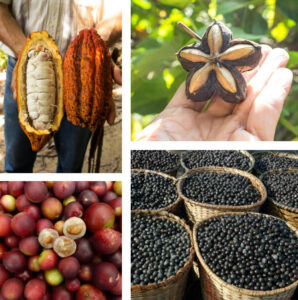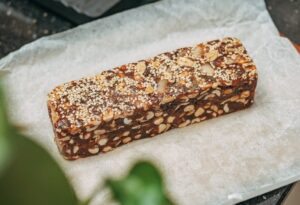Orthoptera protein is better than you think.
Entomophagy (or the eating of insects) has a bad reputation. We understand. Even a survey of over 400 people revealed that the greatest concern about eating insects was, “It just seems gross.”
What if you embrace insects as food? Is knowing that this product can change your diet and positively affect Mother Nature, enough to make you change your mind? The same survey found that it might be. It found that most people were more open to eating crickets after learning more about entomophagy. This was especially true when the “flour” was presented.
A cricket flour-based pasta dish was something I tried once. It didn’t taste any different from regular pasta. It had a slightly different texture to whole-wheat pasta, but it was still tasty.
This initial resistance from consumers explains why many companies are rebranding insect foods as flours, powders, bars, or snack bars. Cricket flour, however, is one of the most popular.
Read more: This bold, innovative company is shaping the future of nutrition. Experience delicious and sustainable protein options, for a healthier body and planet.
What is the nutritional value of Orthoptera protein protein?
Cricket powder is made from ground crickets. It’s very high in protein. Research has shown that cricket protein is comparable with protein from skinless chicken breast. This is because crickets contain between 58 and 65 percent protein per bug. This protein makes cricket flour an excellent ingredient for cooking and baking.
It’s also packed with vitamins and minerals. It contains 24 micrograms of the energy-boosting Vitamin B-12 per 100g of cricket powder. This is 8x as much as salmon has. The essential mineral iron is also found in cricket flour at 6 to 11 mg per 100g — twice as much as spinach. Initial cell research also suggests our bodies absorb minerals such as iron more easily when it is delivered via crickets than beef.
Highlight of some of the nutrients:
Orthoptera protein
Vitamin B-12
Potassium
Calcium
Iron
Magnesium
Selenium
Fatty acids
How does Orthoptera protein taste?
Let’s not forget about one of the most important factors. You might be wondering, “How does it taste?” Afterall, taste is probably what most people think about when they consider crickets as food.
Many people believe crickets taste disgusting, but they haven’t actually tried it. Cricket flour is mildly nutty, and people describe it as more pleasant than they expected. When cooked, cricket flour imparts an earthy flavor that can be disguised with other flavors and ingredients. Even after the sauce was added, the pasta I tried didn’t taste any different. In some videos online, participants who taste cricket protein bars before being told what they are, say they preferred them to the regular protein bars.
Read more: This bold, innovative company is shaping the future of nutrition. Experience delicious and sustainable protein options, for a healthier body and planet.
Why is there a push for insect-based food?
The Food and Agriculture Organization of the United Nations points out the “huge potential” of insects to positively impact food security issues. These are just a few reasons:
Some insects can process food very efficiently. Crickets, for example, can consume 2 kg (kg) of food per day and then convert that into 1 kg of bodyweight gain. This is a high turnover rate compared to other livestock such as cows.
Insects emit fewer greenhouse gasses and use significantly less water and land than cattle.
Nature is a diverse place for insects, and they can live in many different habitats all over the globe, unlike livestock which have very specific geographic requirements.
- info@orthopteraprotein.com
- https://orthopteraprotein.com/
- Orthoptera Protein
- United States









